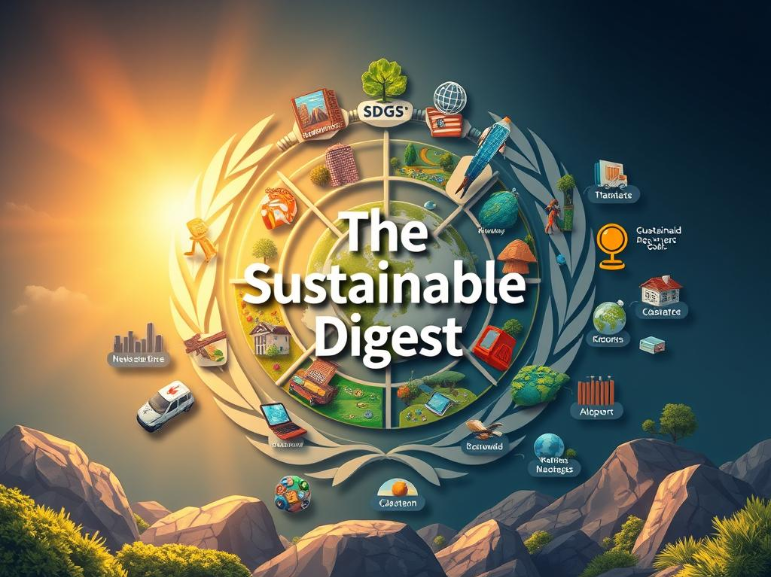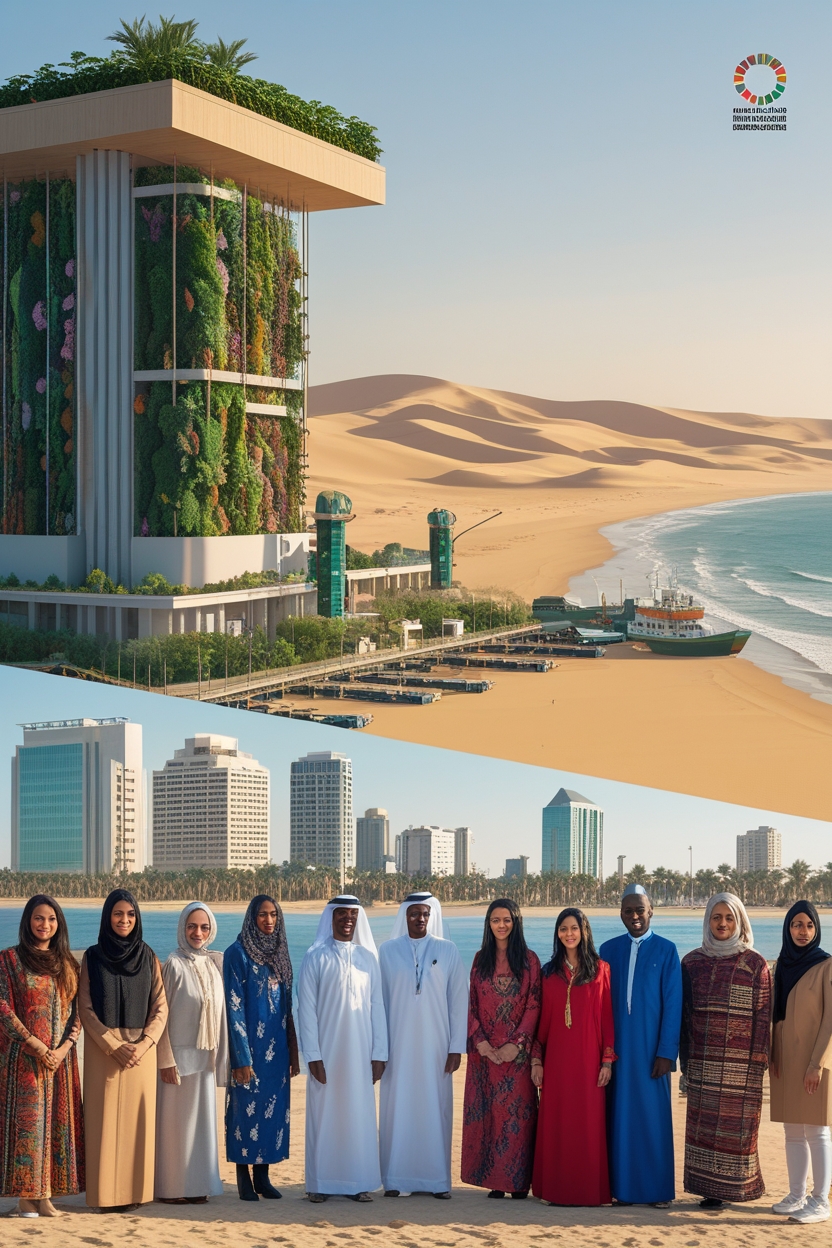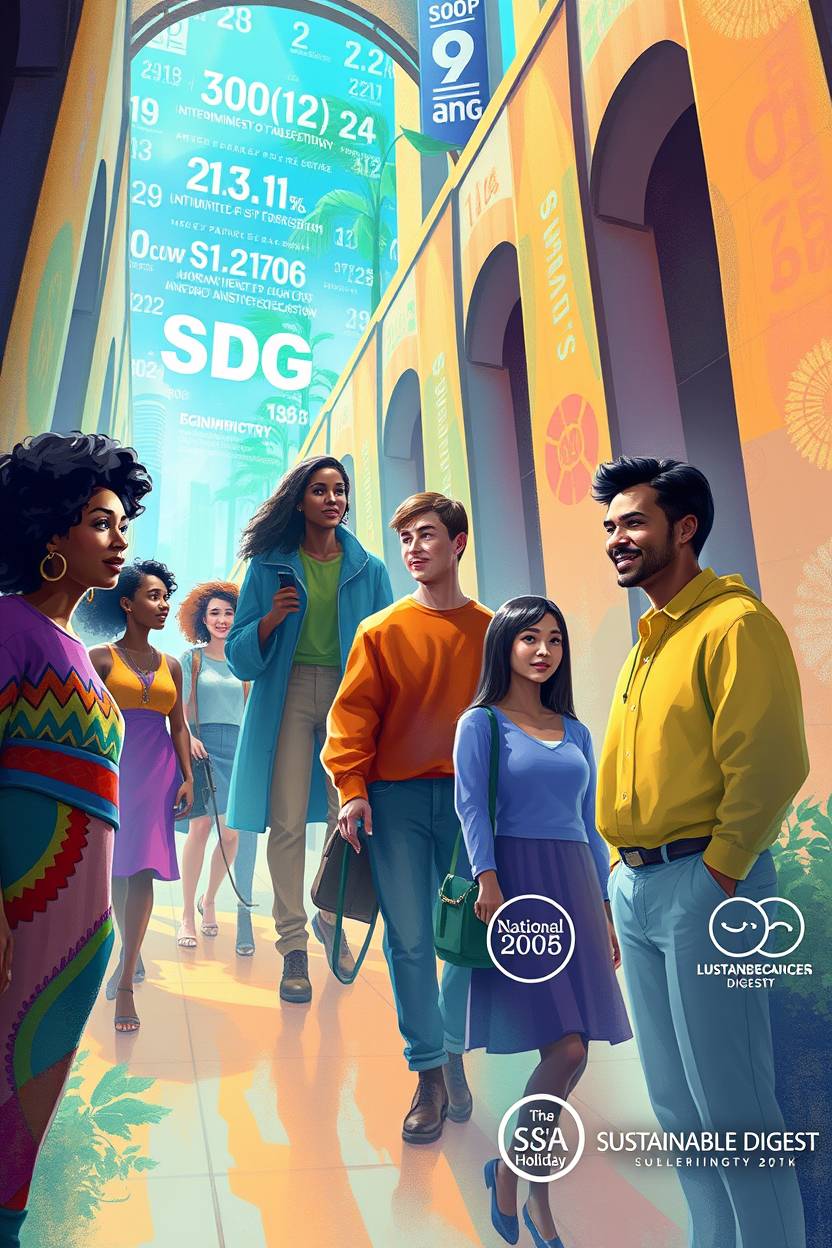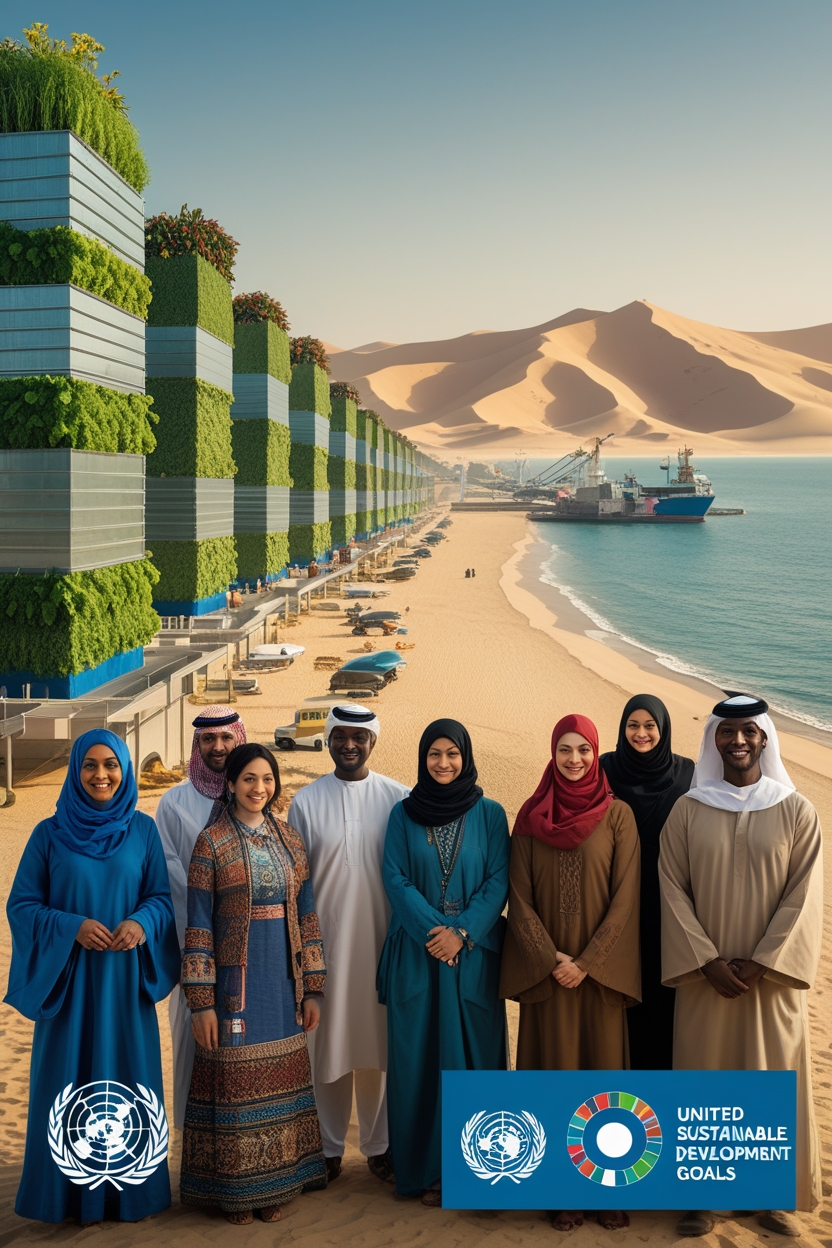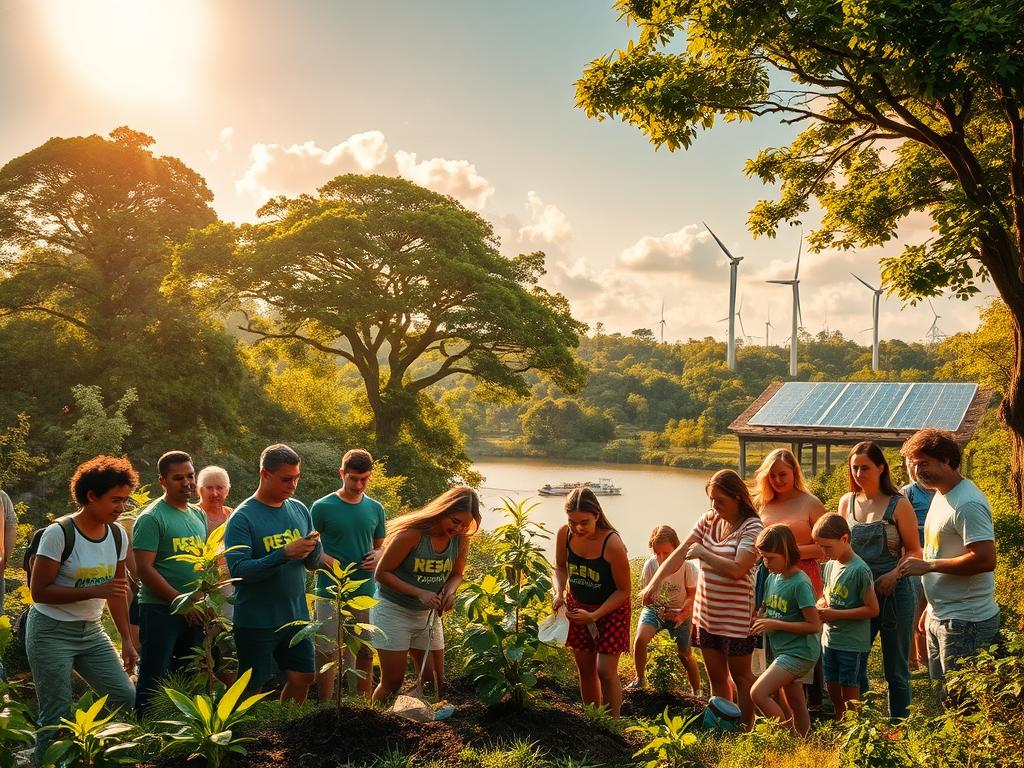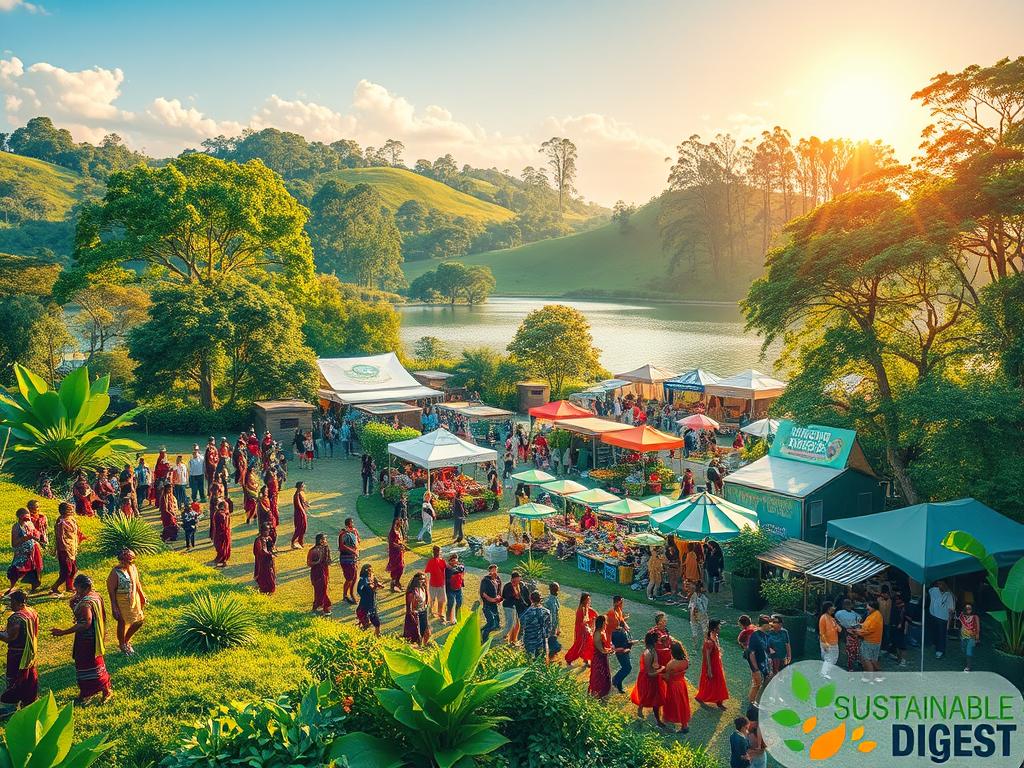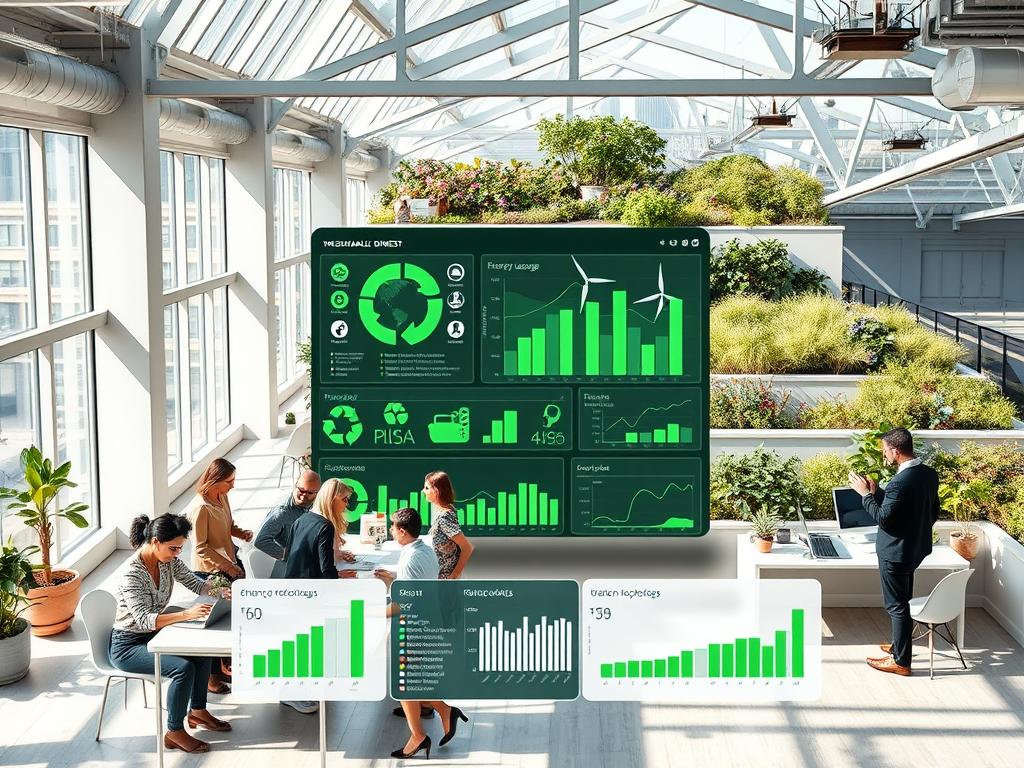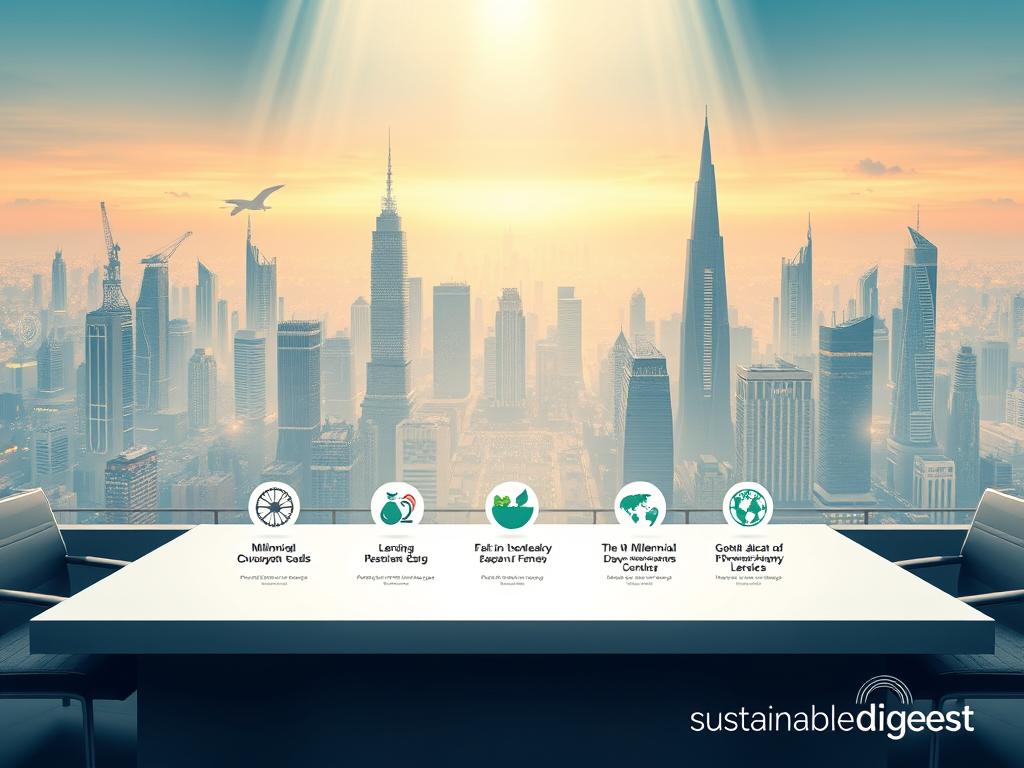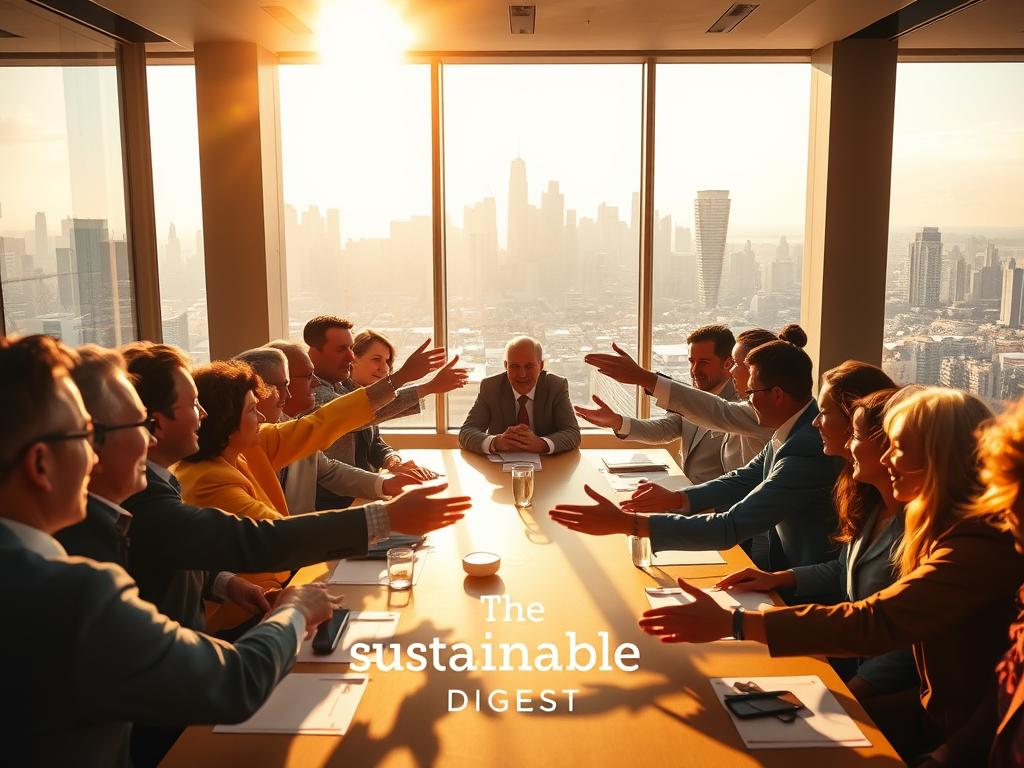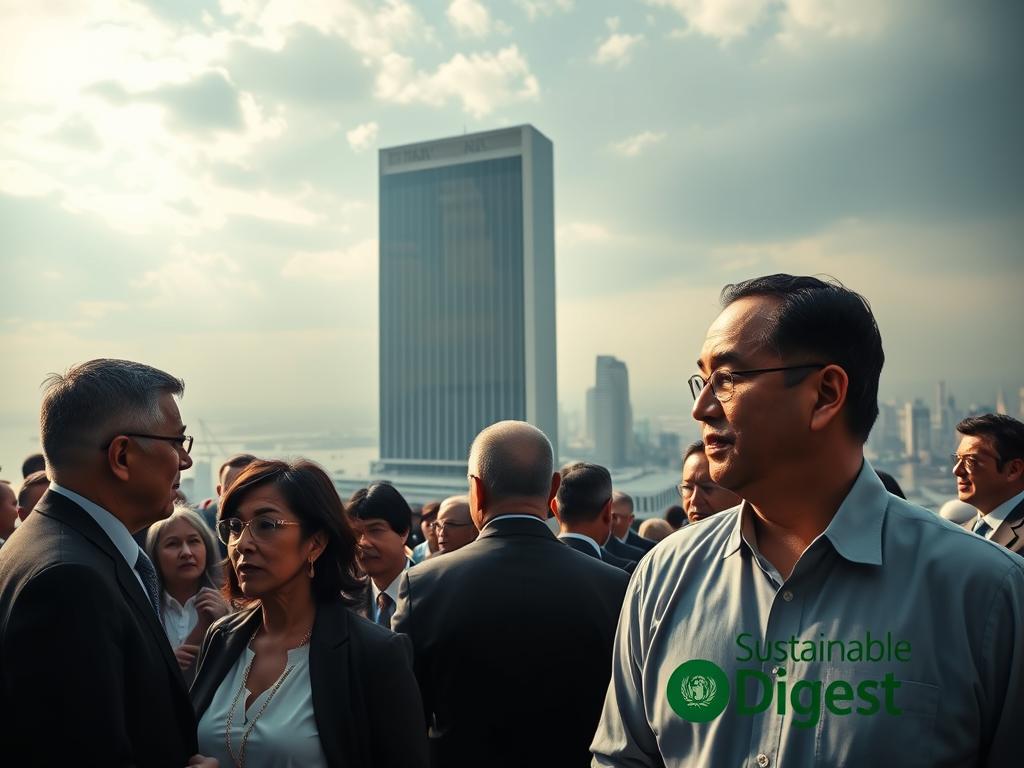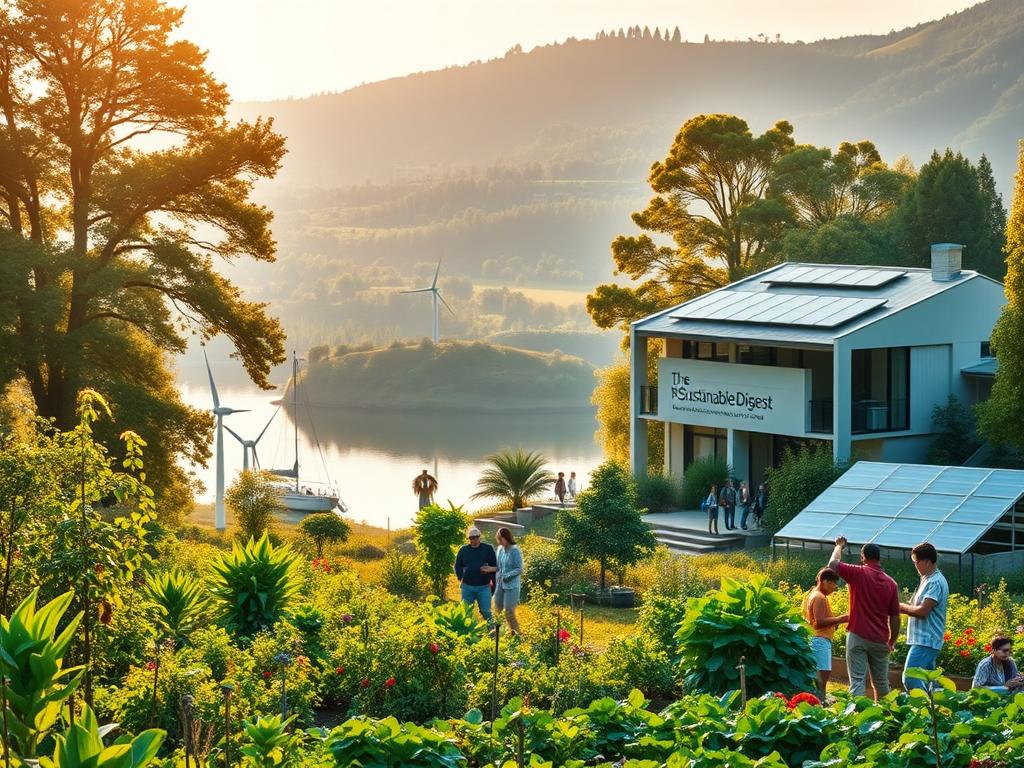
The COP30 conference is a key moment in the fight against climate change. The Paris Agreement is a key part of this effort. The world will meet in Brazil, hoping to make big strides in climate action, energy transition, and sustainable agriculture.
Climate, energy, and agriculture are all connected. To fight climate change, we need to work together. We must use new energy and farming ideas to cut down on harmful emissions.

The Global Climate Landscape: Setting the Stage for COP30
COP30 is coming, and the world needs to act fast on climate change. The situation is serious, with temperatures rising and extreme weather happening more often.
Current State of Climate Change and Global Response
How countries respond to climate change varies. Some are cutting carbon emissions, while others are falling behind. Reports show that global emissions keep going up, even as we try to use more renewable energy.
From COP29 to COP30: Bridging Critical Gaps
The path from COP29 to COP30 shows big gaps in climate action. We need to work on climate finance, cutting carbon, and making climate plans part of national goals. Closing these gaps is key for real progress at COP30.
U.S. Climate Policy Positioning Ahead of COP30
The U.S. has a big role in fighting climate change, and its plans before COP30 are important. The U.S. has shown it wants to cut emissions and support clean energy. But, it’s hard to make these plans work.
As COP30 gets closer, we must all work together to tackle climate change. By fixing big gaps and stepping up climate efforts, we can aim for a greener future.
Understanding the Paris Agreement Evolution
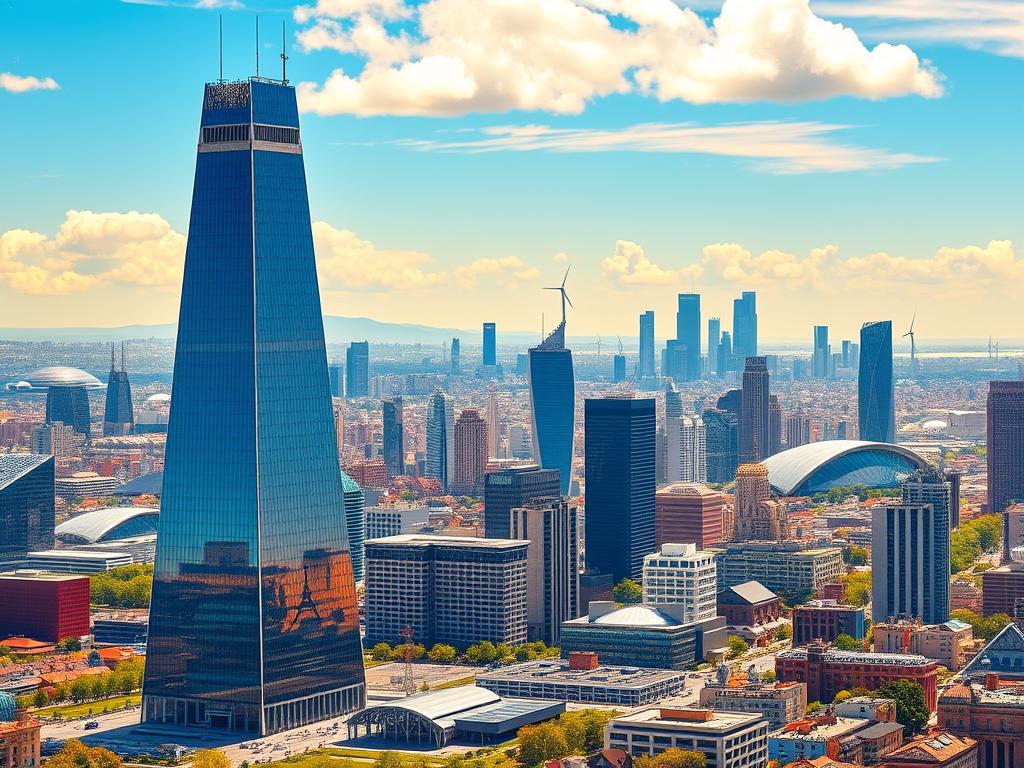
COP30 is coming, and we’re looking at the Paris Agreement again. We’re checking how it’s doing against new global challenges.
Original Paris Agreement Objectives and Progress
In 2015, the Paris Agreement set big goals. It aimed to keep global warming under 2°C and try for 1.5°C. Countries have made good progress, with many sharing plans to cut greenhouse gas emissions.
Nationally Determined Contributions (NDCs) Assessment
NDCs are key to the Paris Agreement. They show each country’s plan to fight climate change. So far, some countries are doing well, while others need to catch up. Here’s a look at NDCs around the world.
| Region | Status of NDCs | Emissions Reduction Target |
|---|---|---|
| Europe | Updated NDCs submitted | 55% reduction by 2030 |
| North America | NDCs under revision | 40% reduction by 2030 |
| Asia | Varied; some updated, others pending | 30% reduction by 2030 |
Expected Revisions and Enhancements at COP30
COP30 is a big deal for the Paris Agreement. Countries will likely set more ambitious goals and improve their climate plans. The world hopes COP30 will help fill gaps in climate action and push for a greener future.
Brasil as COP30 Host: Implications and Expectations
Brasil is set to host COP30, focusing on saving the Amazon and making cities more resilient. The world will watch as Brasil’s green policies and leadership are tested.
Brasil’s Environmental Policies and Leadership Role
Brasil leads in environmental protection, aiming for sustainable growth. Its policies balance economic needs with protecting nature.
Amazonian Preservation as a Central Theme
Protecting the Amazon is key for Brasil’s green goals. At COP30, Brasil will show its dedication to saving this crucial ecosystem.
Urban Resiliency and Infrastructure Initiatives
Brasil’s cities are also a focus, with plans to make them more resilient and green. These efforts are vital against climate change’s urban threats.
| Initiative | Description | Expected Outcome |
|---|---|---|
| Amazonian Preservation | Protection of the Amazon rainforest through sustainable practices and conservation efforts | Reduced deforestation and enhanced biodiversity |
| Urban Resiliency | Enhancement of urban infrastructure to withstand climate-related challenges | Improved sustainability and reduced vulnerability to climate change |
| Infrastructure Development | Investment in green infrastructure and sustainable urban planning | Efficient use of resources and reduced environmental impact |
Brasil’s role at COP30 will be watched closely. The event’s outcomes will influence global climate and sustainable development efforts.
Forecasting Forthcoming COP30 Paris Agreement UNSDGs Climate Energy Agriculture Developments

Nations are gearing up for COP30. They’re looking at new policies and ways to work together. These will help with climate change, renewable energy, and making farming more sustainable.
Anticipated Policy Shifts and New Commitments
COP30 is expected to bring big changes in how we tackle climate change. New commitments are anticipated in the form of enhanced Nationally Determined Contributions (NDCs) and new ways to fund climate efforts.
Integration of Climate, Energy, and Agricultural Policies
At COP30, we’ll focus on linking climate, energy, and farming policies. This means developing synergistic policies that help farming adapt to climate change, boost renewable energy, and protect our land.
Measurement and Accountability Frameworks
To make sure these new policies work, robust measurement and accountability frameworks are key. They’ll help us track progress, find areas for improvement, and adjust plans as needed.
The success of COP30 relies on countries working together. By linking climate, energy, and farming policies, and setting up strong tracking systems, COP30 can pave the way for a greener, more resilient future.
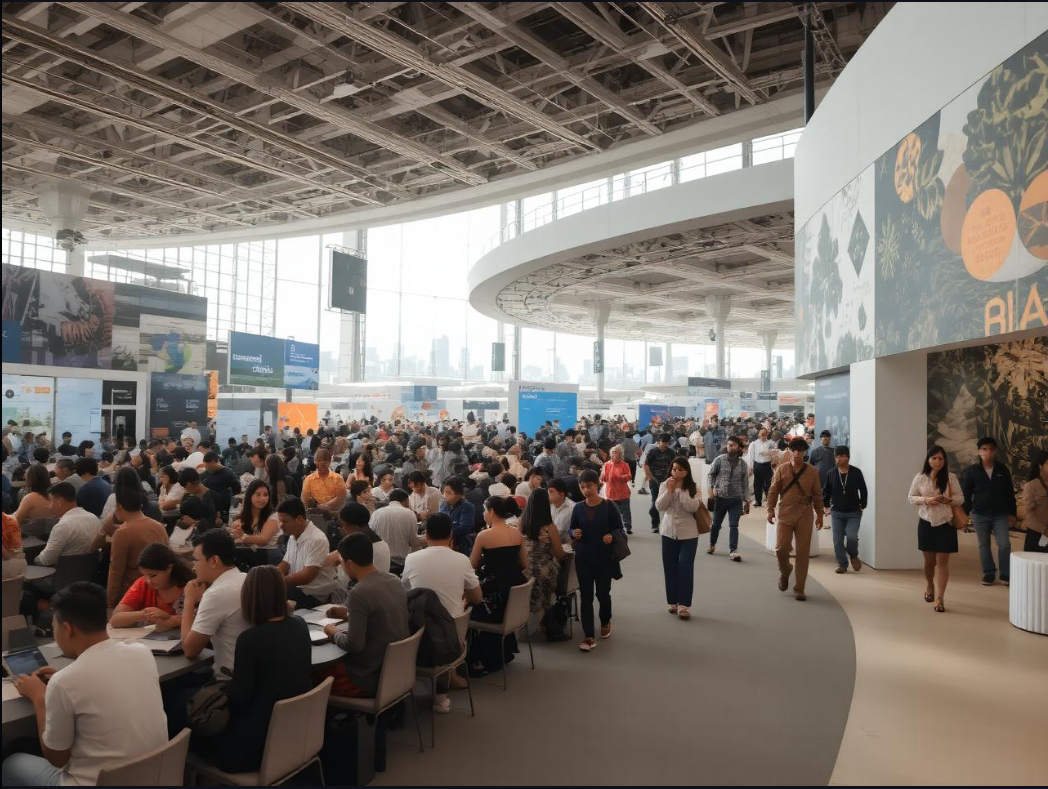
UNSDGs 1-6: Human Development and Environmental Foundations
UNSDGs 1-6 tackle key issues like poverty, hunger, health, education, gender equality, and clean water. These goals are linked, forming a strong base for sustainable development and fighting climate change.
SDGs 1-2: Poverty, Hunger, and Climate Justice Intersections
The first two SDGs aim to end poverty and hunger, closely tied to climate justice. Climate change worsens these issues by affecting farming and the economy. Climate justice seeks fair solutions for those most hit by climate change.
SDGs 3-4: Health, Education, and Climate Resilience
SDGs 3 and 4 stress the role of health and education in facing climate change. Better health and education help communities adapt to climate shifts. For example, educated folks can use climate-smart agriculture to ensure food security.
SDGs 5-6: Gender Equality and Clean Water in Climate Action
Gender equality and clean water are key in tackling climate change. Empowering women boosts climate resilience, as they manage natural resources. Also, having clean water is crucial for adapting to climate change, especially during droughts and heatwaves.
| SDG | Focus Area | Climate Relevance |
|---|---|---|
| 1 | No Poverty | Economic stability in the face of climate change |
| 2 | Zero Hunger | Food security through climate-resilient agriculture |
| 3 | Good Health and Well-being | Health services resilience to climate impacts |
| 4 | Quality Education | Education for climate change adaptation |
| 5 | Gender Equality | Empowering women for climate resilience |
| 6 | Clean Water and Sanitation | Water security in a changing climate |
UNSDGs 7-12: Economic and Infrastructure Transformation

The world is moving towards a sustainable future. UNSDGs 7-12 are key in this journey. They aim to link economic growth with sustainable practices and fair resource sharing.
SDG 7: Affordable and Clean Energy Targets
SDG 7 ensures everyone has access to affordable, reliable energy. It pushes for more renewable energy and better energy use. Renewable energy technologies are vital, offering a cleaner choice and cutting emissions.
SDGs 8-9: Economic Growth and Innovation for Sustainability
SDGs 8 and 9 focus on economic growth and innovation. SDG 8 aims for sustainable economic growth and decent work for all. SDG 9 promotes resilient infrastructure and inclusive industrialization through innovation. They highlight the role of infrastructure development and technological innovation in sustainable development.
SDGs 10-12: Reducing Inequalities and Ensuring Sustainable Consumption
SDGs 10-12 tackle inequality and sustainable consumption. SDG#10 aims to cut income gaps. SDG#11 works on making cities safe and sustainable. SDG#12 encourages sustainable consumption and production, essential for a smaller environmental footprint.
The UN Secretary-General says, “Sustainable development leads to a fairer, wealthier world.” Achieving UNSDGs 7-12 is crucial. It requires teamwork from governments, businesses, and civil society for a sustainable future.
“The future depends on what we do today.” This shows the urgency and importance of these goals.
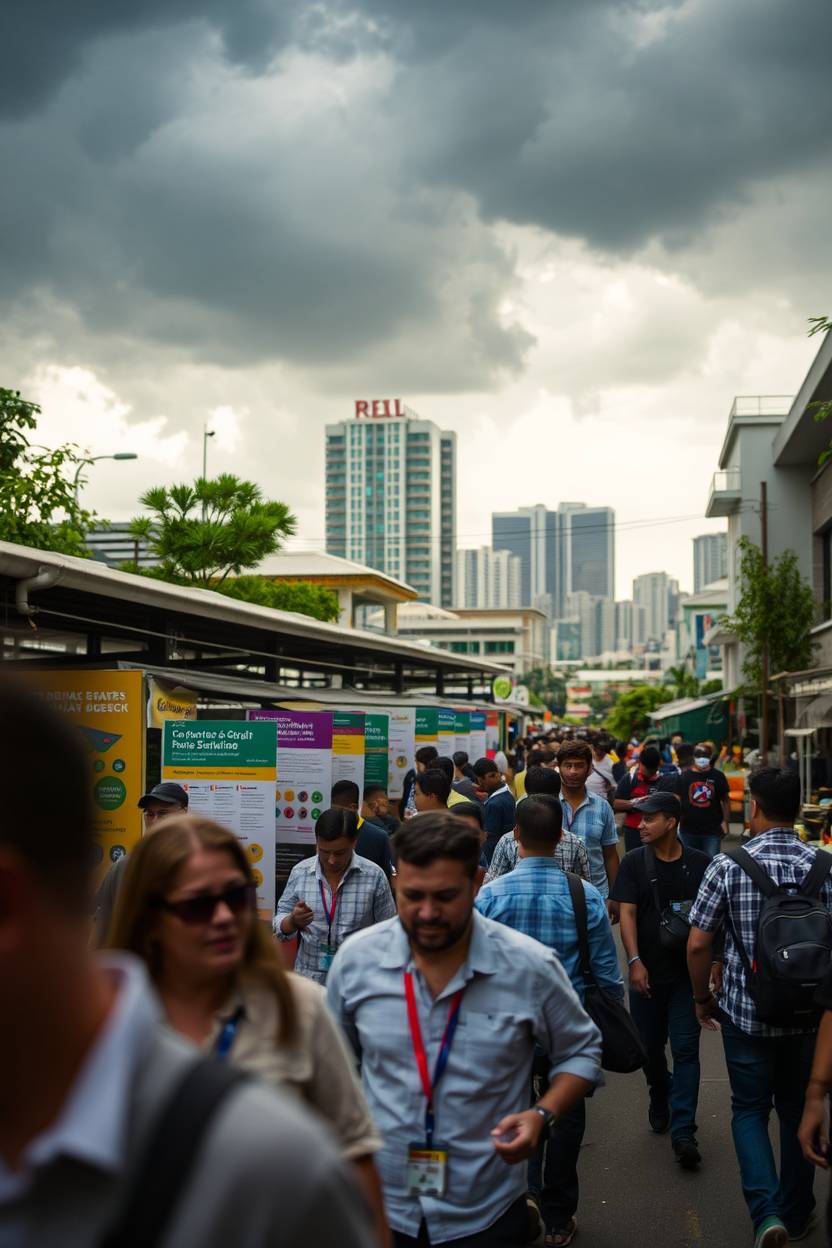
UNSDGs 13-17: Climate Action and Global Partnership
The world is coming together at COP30 in Brasil. We’re focusing on UNSDGs 13-17, which are all about climate action and global partnerships. These goals are key to achieving a sustainable future.
SDG 13: Direct Climate Action Initiatives
SDG 13 urges us to act fast against climate change. We need to cut down greenhouse gas emissions and boost renewable energy. Countries must also make their plans stronger to meet the Paris Agreement’s targets.
SDGs 14-15: Life Below Water and on Land Protection
SDGs 14 and 15 are about protecting our oceans and lands. We aim to conserve marine and terrestrial ecosystems and stop biodiversity loss. Healthy ecosystems are vital for fighting climate change.
SDGs 16-17: Peace, Justice, and Partnership Frameworks
SDGs 16 and 17 are about creating peaceful societies and ensuring justice. They also focus on building strong partnerships for sustainable development. Good governance and cooperation are key to tackling climate change.
| SDG | Objective | Key Actions |
|---|---|---|
| 13 | Climate Action | Reduce emissions, promote renewable energy |
| 14-15 | Life Below Water and on Land | Conserve ecosystems, halt biodiversity loss |
| 16-17 | Peace, Justice, and Partnership | Promote inclusive societies, strengthen institutions |
At COP30, we need everyone to work together. Governments, businesses, and civil society must join forces. Together, we can make our world more sustainable and fair.
Climate Change Mitigation Strategies at the Forefront

As climate change speeds up, the world is focusing on ways to slow it down. We need to cut down greenhouse gas emissions. This is key to keeping global warming under 2°C, as the Paris Agreement says.
Carbon Reduction Targets and Implementation Pathways
Countries are setting big goals to cut carbon emissions. Many want to reach net-zero by 2050. To get there, they’re using different strategies, like:
- Switching to renewable energy
- Improving energy use in buildings and factories
- Boosting electric cars and public transport
- Using carbon pricing
These plans need a lot of money for clean tech and new infrastructure. For example, the European Union’s Green Deal plans to be carbon neutral by 2050. It includes many policies and investments.
Climate Finance Mechanisms and Investment Trends
Money for climate change is key, especially for poor countries. The Green Climate Fund (GCF) helps fund climate projects. There’s also more money going into green bonds and climate-focused funds.
U.S.-Led Adaptation Strategies for Vulnerable Communities
The U.S. is helping a lot with climate change, especially for poor areas. They’re working on making places more resilient. This includes better infrastructure, early warnings, and smart farming.
By using strong plans to cut emissions and adapt to change, we can make the future safer and greener.
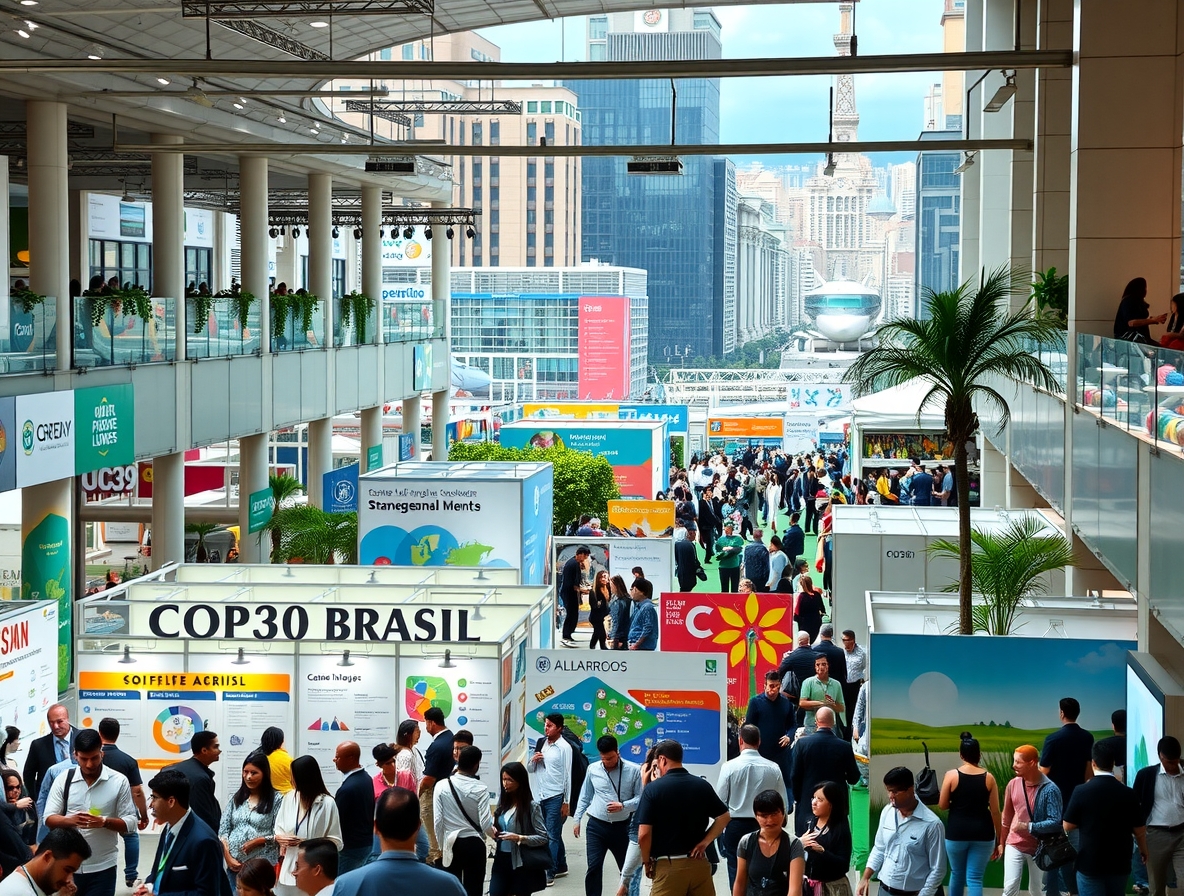
Renewable Energy Transformation: Policies and Technologies
COP30 Brasil is coming, and the focus on renewable energy is more important than ever. We need strong policies and new technologies. The world is moving towards sustainable energy to fight climate change.
This change is not just about making energy differently. It’s about making our whole energy system better. We want it to be sustainable, fair, and strong.
Global Energy Transition Acceleration
The world is quickly moving to renewable energy. This change includes using more renewable sources, saving energy, and making cars electric. Important policies helping this change are:
- Renewable portfolio standards (RPS)
- Tax incentives for renewable energy projects
- Grid modernization efforts
These policies help make it easier to invest in and innovate with renewable energy.
Emerging Technologies and Innovation Priorities
New technologies are key in the shift to renewable energy. Important areas for innovation are:
- Advanced solar panel technologies
- Energy storage systems
- Smart grid technologies
These technologies make renewable energy better and more affordable. They also help mix renewable energy into our power grid.
Energy Access and Equity Considerations
As we move to renewable energy, making sure everyone has access is crucial. We need to help communities that are left behind and make energy policies fair for all.
Energy equity means everyone gets to enjoy the benefits of renewable energy. It doesn’t matter if you’re rich or poor, or where you live.
Agricultural Sustainability and Food Security Initiatives

Climate change is a big challenge for our food systems. We need new ways to farm and grow food. The world’s population is expected to hit 9.7 billion by 2050.
Climate-Smart Agriculture Approaches
Climate-smart agriculture (CSA) helps farmers grow food better. It uses crops and animals that can handle climate changes. CSA also includes farming methods that cut down on greenhouse gases.
By using CSA, farmers can make more money. They also help make our food system more sustainable.
Regenerative Farming and Soil Carbon Sequestration
Regenerative farming is becoming more popular. It makes soil healthier and boosts biodiversity. It also helps fight climate change.
Methods like no-till farming and using organic amendments help. They improve soil’s ability to hold carbon. This also reduces erosion and keeps water in the soil.
Food System Resilience and Supply Chain Transformation
Food systems need to be more resilient. This is especially true with climate change. We must make supply chains better.
We can do this by cutting down on food waste. Improving how we store and move food is also key. And we should encourage people to eat more sustainably.
| Initiative | Description | Benefits |
|---|---|---|
| Climate-Smart Agriculture | Promotes climate-resilient agricultural practices | Improved productivity, enhanced resilience, reduced emissions |
| Regenerative Farming | Enhances soil health and biodiversity | Improved soil carbon sequestration, reduced erosion, enhanced ecosystem services |
| Food System Resilience | Transforms supply chains for efficiency and transparency | Reduced food waste, improved infrastructure, sustainable consumption |
By supporting these efforts, we can make our food system better. It will help with global development and food security.

Conclusion: The Path Forward Beyond COP30
After COP30, the world will focus more on global climate action. The international year of cooperative COP30 initiative has started a united fight against climate change. This includes energy and agricultural sustainability.
The COP30 conclusion is another big step in fighting climate change. It’s about following the Paris Agreement and reaching the United Nations Sustainable Development Goals (UNSDGs).
The future needs countries to work together. They must use climate finance and push for renewable energy. Also, making farming sustainable and ensuring food for everyone is key.
Global efforts to fight climate change will grow. The international year of cooperative COP30 initiative is very important. Together, countries can make a better, fairer world faster.

Key Takeaways
- The COP30 conference will play a crucial role in advancing the Paris Agreement’s goals.
- Achieving UNSDGs requires integrated approaches to climate, energy, and agriculture.
- Innovations in energy and agriculture are critical for reducing emissions.
- Global cooperation is essential for meeting climate targets.
- The conference will highlight the need for sustainable practices in agriculture.















